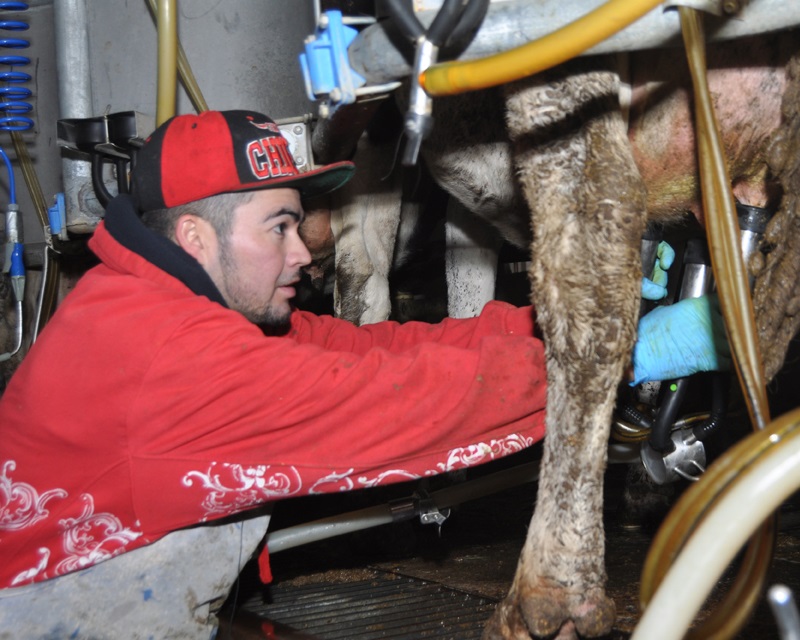N.M. Field and Dairy Laborers Win Right To Workers’ Comp—Court Calls Exemption ‘Absurd’

New Mexico dairy farm work can be hazardous. (Joseph Sorrentino)
The New Mexico Court of Appeals ruled in June that excluding field and ranch workers from workers’ comp protection is unconstitutional. It was the second victory for New Mexico’s farmworkers in less than a year—and that’s big news in a low-wage sector made up primarily of immigrant workers, where victories tend to be few and far between.
The first victory came last August when farmworkers finally started getting paid the correct minimum wage. Farmworkers were routinely, and incorrectly, paid the federal minimum when they were entitled to the New Mexican minimum wage, which is 25 cents per hour higher. It only amounts to $8 or $10 a week, but it is significant for these workers, who are among the poorest in the United States.
And now, after six years of legal battles, the state Court of Appeals has upheld a District Court ruling that New Mexico’s farmworkers are not to be excluded from workers’ comp protection.
Read the full article here.
